Globe at Night
 Frances Azaren
Frances Azaren|
MARCH 27 - APRIL 5, 2019 |
Audience: All Ages
Program Type: Citizen Science
Program Distribution: International
Join the Astronomers Without Borders and Globe at Night Adopt-A-Street campaign. Learn more here.

What the program is about and how to participate
What would it be like without stars at night? What would we lose? Starry night skies have given us poetry, art, music and the wonder to explore. A bright night sky affects energy consumption, health, and wildlife.
Globe at Night (GaN) is a rewardingly inclusive way to bring awareness to the public on the disappearance of the starry night sky, its cause and solutions. GaN encourages citizen-scientists worldwide to record the brightness of the night sky. During ten-days per month of moonless evenings, children and adults match the appearance of a specific constellation with 7 star maps of progressively fainter stars found at www.globeatnight.org. (Moonless evenings are chosen to avoid having a natural light bulb in the night sky when taking measurements.) People then submit their choice of star map in-situ using the “webapp” on a smart device. 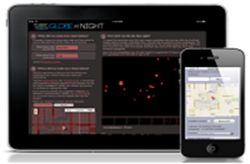
Easy steps to participating in the campaign are listed at www.globeatnight.org/5-steps.php. Resources for how to find the campaign constellations and your latitude and longitude, when to observe, how to use the star charts and how to report are all included. In twelve years of the program, over 180,000 observations from 180 countries have been contributed to a light pollution map.
What resources are available
Resources for GaN exist to make participation easy. There are two ways of taking measurements. The online app for data reporting is in 26 languages. On-the-fly mapping enables citizen-scientists to see observations immediately. Activity guides for every campaign help with the measurements. Postcards in 21 languages provide means to advertise. STEM activities for young children and problem-based learning activities for older students were created to experience real-life scenarios: role-playing sea turtles hatching (misdirected by lights on shore) or analyzing an ISS image of Houston to estimate the wasted energy, cost and carbon footprint. Our Facebook page exists to encourage dialogue and bring cutting-edge news. To entice interest, we had monthly newsletters and serial podcasts starring the Dark Skies Crusader. Stay tuned as the newsletters are coming online again!
What you can do with the data
There are many potential uses of the open GaN database. Participants can explore the last 12 years of data using the GaN interactive map or see how many measurements are from a particular city, using GaN’s map app. The database has been used to investigate how light pollution affects the foraging habits of bats using data from the Arizona Game and Fish, or the habitats of night birds using data from the Audubon Society (Fig. 1). This GaN and Audubon data of the behavior night owls were used in a winning 5th-grade science fair project for a regional science fair (Fig. 2). It also has been used by students to study seasonal trends in nightly sky brightness averages within a city compared to mountaintop observatories (Fig. 3). The data was used to estimate how much brighter a city sky is than a naturally unpolluted starry sky (Fig. 4). In Fig. 5, students visualized their 3700 GaN data points from Fig. 4 as a 35,000-piece Lego map, higher layers as higher limiting magnitudes (LM). With their data, they calculated a factor of 9 compared with an LM 6 sky. In Fig. 6, Tucson was a factor of 100 brighter compared with an LM 7 sky. Dark sky advocates in Figures 7 and 8 used measurements to strengthen lighting laws. Communities in Figures 9, 10 and 11 make a difference by monitoring their night sky brightness levels year after year.
Partnering with special programs
We have built a community of practitioners in various ways worldwide and have metrics on behavioral changes. GaN has been part of special campaigns like with the National Park Service, the National Geographic BioBlitz and Tucson in 2011. In 2009 and 2015, GaN was an official citizen-science campaign for the United Nation-sanctioned International Years of Astronomy and of Light, respectively, setting record participation. To maintain the community and create new partnerships, we have teamed with SciStarter to track participants via a dashboard, with the Girl Scouts and SciStarter in “Think Like a Citizen Scientist”, and with STARS4ALL’s Light Pollution Initiatives. GaN was rated in the top 10 citizen-science programs of 2017.
An invitation for you to join the team
GaN has provided the public with a variety of ways to be better stewards in lighting more responsibly to minimize the disappearance of our potentially starry night sky. GaN is a flagship program of the National Optical Astronomy Observatory (NOAO). NOAO is the U.S. national observatory operated by the Association of Universities for Research in Astronomy, Inc. under cooperative agreement with the National Science Foundation.
We invite you to participate in GaN this Global Astronomy Month. We further invite you to join us all year (2019) for the International Astronomical Union’s 100th year anniversary by taking GaN measurements during any of the monthly 10-day campaigns. Your GaN measurements will help make a difference in preserving our night sky heritage.
The Challenge
We are challenging people to take measurements every half mile or kilometer from the center of a town or city to its outskirts and a little beyond. The challenge is to see what the difference is in night sky brightness. For Tucson, a LM 2 has been measured at city center and a LM 7 beyond its eastern edge. The difference of 5 means it is a 100 times brighter at city center than the eastern edge. Once you complete your measurements, email your observer IDs (one per measurement) to us at [email protected] Those who are able to complete these measurements in their own town or city will be invited to become Dark Skies Ambassadors. Dark Skies Ambassadors are a part of the Dark Skies for All Global Project for the 100th birthday of the International Astronomical Union. Details for Dark Skies Ambassadors will be described on the www.darkskies4all.org website.



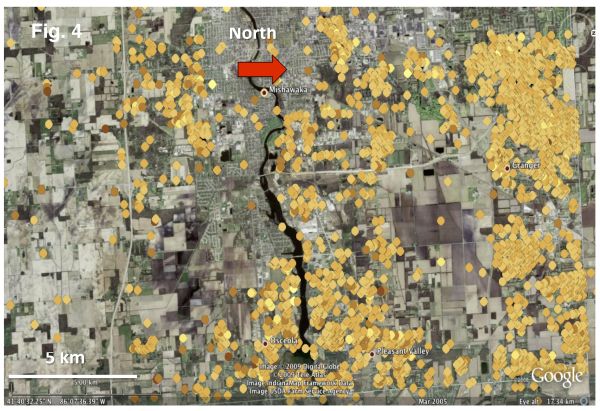
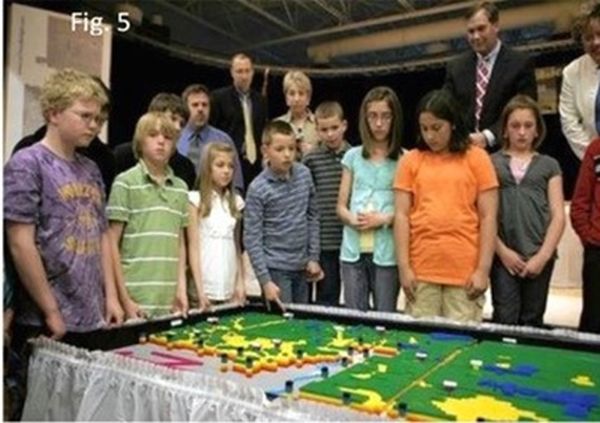
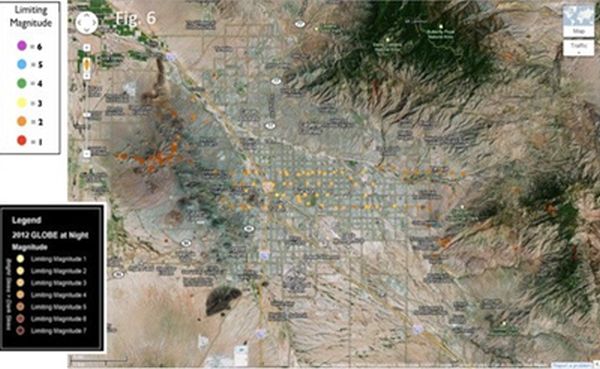


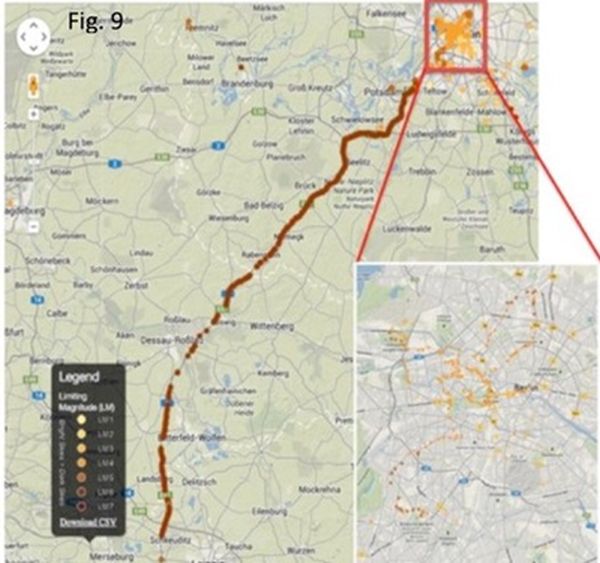
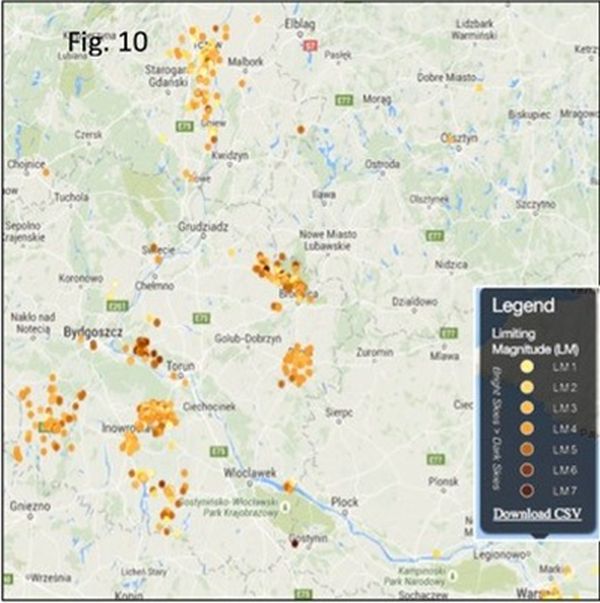

Image Credits:
Figure 1. Alisa Fersch (and Connie Walker)
Figure 2. Don Swann
Figure 3. Rachel Nydegger (and Connie Walker)
Figure 4. Chuck Bueter
Figure 5. Chuck Bueter
Figure 6. Connie Walker and Jeremy White
Figure 7. Data taken by Eileen Gryzbowski and colleagues; map by Connie Walker
Figure 8. Roland Dechesne
Figure 9. Data taken by Chris Kyba; map by Connie Walker
Figure 10. Data taken by Astrobaza students in Poland; map by Connie Walker
Figure 11. Data taken by Montevideo, Uruguay residence; map by Connie Walker
To learn more, visit the following websites:
Dark Skies Rangers activities: www.globeatnight.org/dsr/
Quality Lighting Teaching Kit activities: www.noao.edu/education/qltkit.php and https://laserclassroom.com/product/turn-on-the-night-classroom-stem-kit/
National Optical Astronomy Observatory: www.noao.edu
International Dark-Sky Association: www.darksky.org
Share your experience with the world on Facebook or Instagram and Tweet using #GAM2019. Follow @awb_org and @GlobeatNight.






